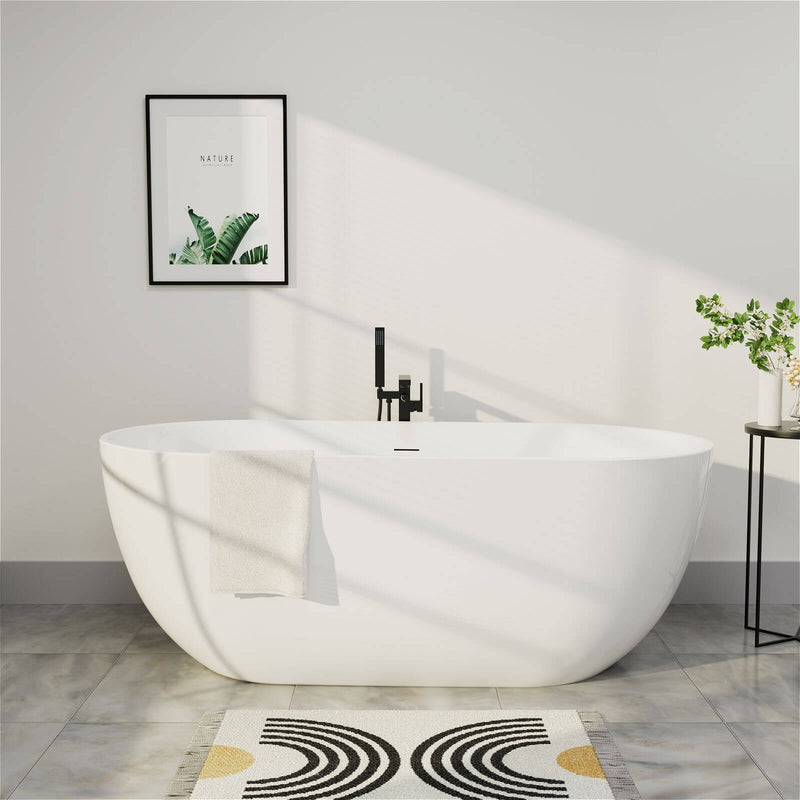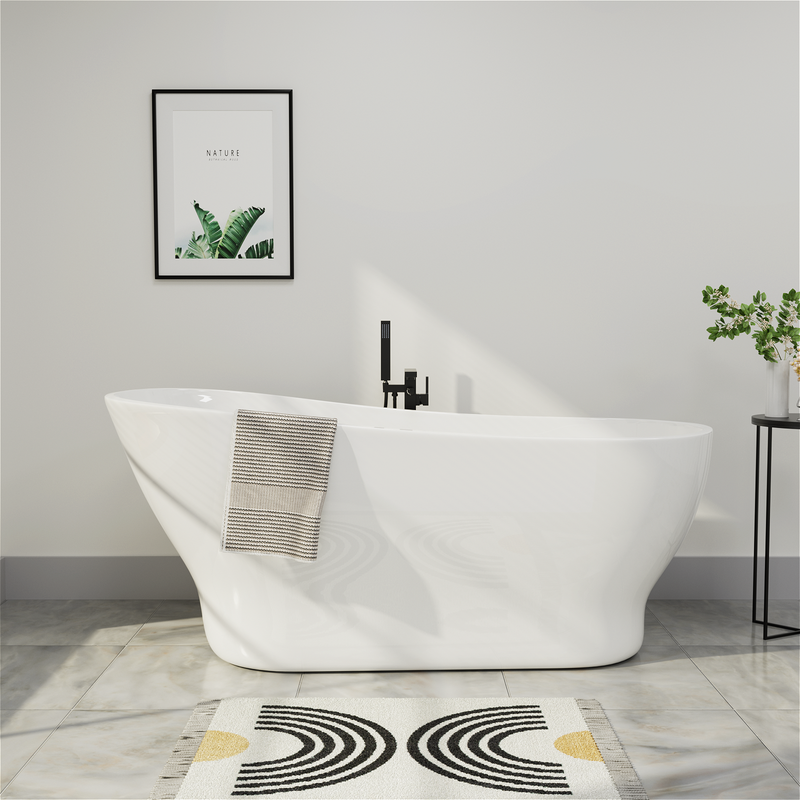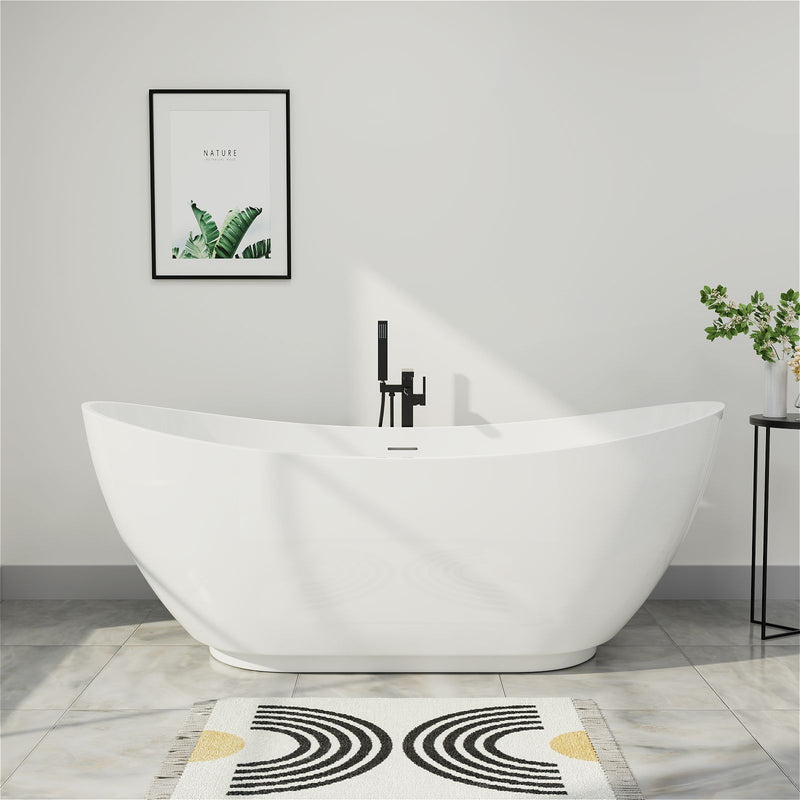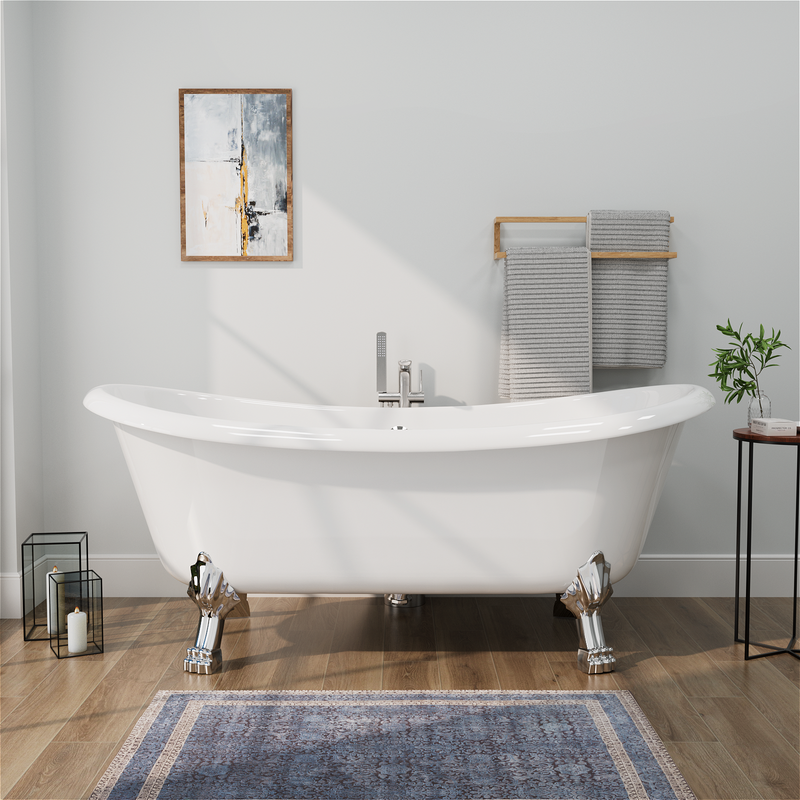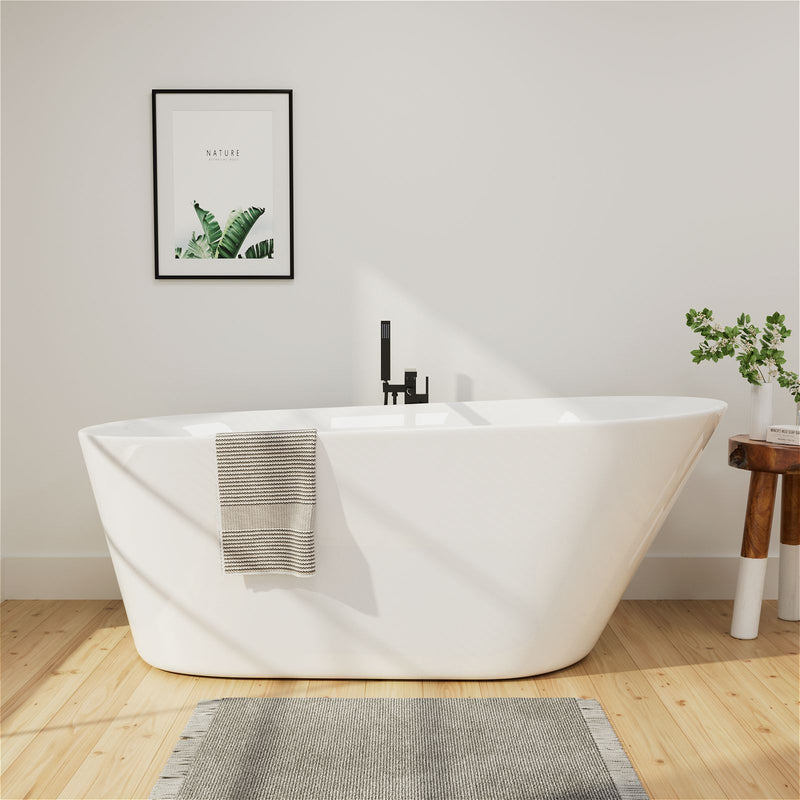In modern bathroom life, the bathtub is not only a place to relax, but also an important facility for personal care. However, during use, the bathtub is prone to accumulate impurities such as hair, soap residue, mineral deposits, etc., which affect drainage efficiency and may breed bacteria. As a key component of the bathtub drainage system, the bathtub filter can not only effectively intercept impurities, but also prevent pipe blockage and extend the service life of the pipe. This article will explore in depth the working principle, main types, purchase points and maintenance methods of the bathtub filter to help readers fully understand this important bathroom accessory.
What is a Bathtub Filter?
A bathtub filter, also known as a bathtub faucet filter, is a compact water filtration device that can be directly connected to the bathtub faucet. It filters water as it enters the bathtub and removes common contaminants.
The Role of Bathtub Filters
The main function of bathtub filters is to intercept solid impurities entering the drain pipe to prevent them from clogging the pipe. Specifically, its functions include:
Preventing Blockage
Hair, dandruff, soap residue, etc. are the main causes of blockage in the bathtub drain. The filter can effectively intercept these substances and reduce the risk of pipe blockage.
Protect the Plumbing System
Long-term accumulation of dirt may corrode the inner wall of the pipe, especially metal pipes. Filters can reduce dirt accumulation and extend the life of the pipe.
Improve Sanitation
Accumulated dirt can easily breed bacteria and odors. Filters can reduce this problem and keep the bathtub clean.
Improve Drainage Efficiency
The filtered water flows more smoothly, avoiding the problem of slow drainage caused by blockage.
Without a filter, the bathtub drain may be frequently blocked, resulting in increased maintenance costs and even the need to replace part of the pipe. Therefore, choosing the right bathtub filter is crucial.
Main Types of Bathtub Filters
Bathtub filters can be classified according to their structure, installation method and filtering mechanism. Here are some common types:
Mesh Strainer
Principle: Use metal or plastic filter mesh to block larger particles of impurities (such as hair and soap blocks) by physical interception.
Advantages: Simple structure, easy to clean, low cost.
Disadvantages: Cannot filter tiny particles and needs to be cleaned regularly to prevent clogging.
Hair Catcher
Principle: Usually made of silicone or plastic, with a fine comb structure, specially designed to catch hair.
Advantages: Excellent hair filtering effect, suitable for long-haired users.
Disadvantages: Limited filtering effect on other impurities (such as soap residue).
Removable Filter
Principle: Removable design, usually integrated with the bathtub drain cover, easy to remove and clean.
Advantages: Easy maintenance, suitable for long-term home use.
Disadvantages: If not cleaned in time, it may affect the drainage speed.
Self-Cleaning Filter
Principle: Use water flow power to automatically flush impurities on the filter, reducing the frequency of manual cleaning.
Advantages: Low maintenance cost, suitable for commercial places (such as hotels, SPA).
Disadvantages: High price and complex structure.
Magnetic Filter
Principle: Built-in magnets can absorb metal particles (such as rust) in water, suitable for old metal pipe systems.
Advantages: Reduce metal deposition and protect pipes.
Disadvantages: Ineffective for non-metallic impurities.
Who Should Use a Bathtub Water Filter?
Filtered bath water is good for everyone, but it's especially important for the following groups:
Babies and Young Children
Sensitive skin is more susceptible to irritation and drying out from chlorine and other chemicals. A baby bathtub filter can protect your baby's skin and ensure a safe and gentle bath.
People with Skin Conditions
If you suffer from eczema, psoriasis, or generally sensitive skin, a hard water bathtub filter can soften the water and remove irritants, thereby relieving inflammation, itching, and rashes.
Health-Conscious People
Even if your skin isn't sensitive, reducing your exposure to chemicals in your daily bath is a smart move for long-term health. The best bathtub filters will ensure that every bath is free from harmful contaminants.
How to Choose the Right Bathtub Filter?
When shopping for a bathtub filter, consider the following factors:
Filtration Efficiency
If hair clogging is your main problem, choose a hair interceptor.
For hard (mineral-rich) water, consider a model with sediment filtration.
Mounting Options
Built-in: Installed inside the drain, beautiful but inconvenient to clean.
External: Covers the drain and is easy to remove for cleaning.
Material
Plastic: Lightweight, corrosion-resistant, and suitable for most homes.
Stainless Steel: More durable, suitable for high-frequency use environments (such as gyms and hotels).
Silicone: Good flexibility, can adapt to different drain sizes.
Maintenance Convenience
The detachable design is more convenient for cleaning and suitable for home use.
Self-cleaning models are suitable for commercial places and reduce the need for manual maintenance.
Compatibility
Make sure the filter matches the size of the bathtub drain, otherwise it may affect the seal.
Installation and Maintenance of Bathtub Filters
Installation Steps
Step 1. Close the drain: Make sure there is no water in the bathtub and remove the old filter (if there is one).
Step 2. Clean the drain: Use an old toothbrush or special tools to remove residual dirt.
Step 3. Place the filter: Choose embedded or covered installation according to the type.
Step 4. Test the drain: Put a small amount of water to check for leaks and observe the drainage speed.
Maintenance Suggestions
Weekly Cleaning: Remove the filter and rinse off the accumulated hair and impurities.
Monthly Deep Cleaning: Soak with white vinegar or baking soda solution to remove soap scum and mineral deposits.
Regular Inspection: If the filter is found to be damaged or the drainage is slow, it should be replaced in time.
Future Development Trend
With the popularization of smart homes, bathtub filters may integrate sensors in the future to monitor blockage in real time and remind users to clean through mobile phone APP. In addition, the application of environmentally friendly and degradable materials will also become a trend to reduce plastic pollution.
Conclusion
Although bathtub filters are small accessories, they play an important role in daily bathroom experience. Choosing the right filter and maintaining it regularly can not only avoid pipe blockage, but also extend the service life of the bathtub and improve bathing comfort. I hope this article can help readers better understand bathtub filters and make wise purchasing decisions.
FAQs
Is it really necessary to install a bathtub filter?
Absolutely necessary. Bathtub filters can effectively intercept impurities such as hair and dandruff to prevent pipe blockage. According to statistics, households without filters have to deal with drain blockage problems 2-3 times a year on average, and after installation, this probability can be reduced by more than 80%. Especially for families with long-haired members or pets, filters are essential bathroom accessories.
How to judge whether my bathtub filter needs to be replaced?
It is time to replace it when the following situations occur:
- The filter is obviously deformed or damaged
- The elastic component loses its resilience
- Even if it is brushed hard, the drainage is still slow
- The material has aging cracks
Generally, the service life of plastic filters is 1-2 years, and stainless steel can reach 3-5 years. It is recommended to check the filter status every six months.
Will the filter affect the drainage speed?
High-quality filters are designed with drainage efficiency in mind. Modern filters can control the water flow to less than 5% by optimizing the filter structure and increasing the filter area. If you find that the newly installed filter significantly affects the drainage, it may be:
- Selecting a model with too high a filtration accuracy
- Misalignment with the drain outlet during installation
- Design defects of the product itself
What type of filter should be selected in hard water areas?
Recommended options for hard water areas:
- Composite filter with ion exchange resin layer
- Stainless steel material (better anti-scale performance)
- Self-cleaning model (less maintenance frequency)
Avoid using ordinary plastic filters, as scale will clog the filter faster. Soaking in citric acid solution once a month can effectively remove scale.
What pollutants can the filter filter filter out?
Different filters have different functions, but they can usually remove:
- Physical impurities: hair (99%), dandruff (95%), soap residue (90%)
- Chemicals: chlorine (80-90%), heavy metals (60-70%)
- Microorganisms: some bacteria (50-60%)
Why does my filter always have an odor?
The odor usually comes from three reasons:
- Organic matter accumulated in the filter has decayed
- Bacteria have already grown in the pipes
- Quality problems of the material itself
Solutions:
- Rinse the filter with hot water every week
- Soak it in white vinegar for disinfection every month
- Consider replacing the deodorizing model with an activated carbon layer
Can I install the bathtub filter myself?
Most external filters can be DIY installed in just three steps:
- Clear the drain outlet
- Align the position and press to fix
- Do a leak test
But it is recommended to ask professionals to operate the built-in models or models that require disassembly of the drainage system. Incorrect installation may cause leaks or damage the pipes.
Is the smart filter worth buying?
The main advantages of smart filters:
- Automatically remind cleaning time
- Monitor water quality changes
- Remote control function
Suitable for the following groups:
- Technology enthusiasts
- Business place managers
- Families with elderly/babies
However, the price is usually 3-5 times that of ordinary models, and you need to weigh your budget and actual needs.

